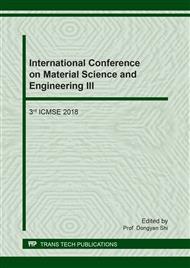p.56
p.62
p.73
p.79
p.88
p.93
p.103
p.109
p.115
The Residual Thickness Calculation of Fan Blades Based on the Resistance Network Mathematic Model
Abstract:
According to the situation of the core parts fan blades are susceptible to sand dust particles, and high speed collision can generate wear corrosion, the current field change before and after, the corrosion is the main cause of pitting corrosion precision error. Through the FSM method analysis of the monitoring area, the residual thickness of pitting corrosion was calculated by the mathematical model of resistor network. The finite element analysis and experimental results are consistent.
Info:
Periodical:
Pages:
88-92
Citation:
Online since:
October 2018
Authors:
Price:
Сopyright:
© 2018 Trans Tech Publications Ltd. All Rights Reserved
Share:
Citation:


